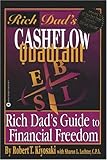 We’ve launched! Our website, at least. We’ve been in operation since July 2008. It’s been one of those cases where we’ve been so busy we haven’t had time for our website until now.
We’ve launched! Our website, at least. We’ve been in operation since July 2008. It’s been one of those cases where we’ve been so busy we haven’t had time for our website until now.
What we do
WebMocha is a California-based web development and technology services company that builds optimized, high-performance, enterprise-level web applications.
We are a team of web development professionals with years of experience from large and small companies such as Yahoo! (YHOO), eBay (EBAY), Scient, Ernst & Young, Simply Hired, Food Network (SNI), HGTV (SNI), and CBS (CBS). This experience has taught us how to develop for massive audiences on a painfully large variety of web browsers and mobile microbrowsers. It wasn’t easy, but we loved doing it. And that’s how we can help you.
We offer development services in XHTML/HTML, CSS, JavaScript/AJAX, SEO, LAMP (Linux, Apache, MySQL, PHP), Ruby on Rails, Flash, Flex, ActionScript, XSLT/XML, WML/WAP, Objective-C & iPhone application development, and Java & Android application development.
Okay, enough of the pitch. Now for the nitty gritty.
How we funded it
Along with fellow ex-Yahoos George Diaz and Barney Mok (both of whom are incredibly talented), we started this company with only a few hundred bucks to incorporate it. We funded the design, logo, and other supporting materials as we made more money. Bootstrapping at its best!
How we came up with the name
One of the questions most friends ask first is: “Where did you come up with the name?” We tossed around countless names before choosing WebMocha, from Web 2.0 sounding names to made-up words to names with missing vowels. Barney and I were chilling in Satura Cakes in Palo Alto, CA, when “WebMocha” struck me. I was looking around the store and pre-pending “Web” to everything. Then I saw a mocha cake of some sort. I happen to love mochas (white chocolate mochas, to be exact), we all work late hours & drink lots of coffee, and we’re all about the web. It was perfect. Thus, our name was born.
Why we started a service company
Another question some friends ask is: “Why a service company?” Shoot, why not? Service companies have their pros and cons. One of the major cons is the work involved. Providing a service – and providing it with excellence – can require a lot of time. Especially for fledgling service companies. The major pro is the money made. Profits can generally be made immediately. That’s why we chose a service business model first. In this economy, profits rule.
That’s not to say we aren’t thinking about making products later, however. Let me just say it’s nice to make an actual income and build enough capital to self-fund product development projects. Wink wink.
How we are doing
Another question I often get: “How are you guys doing?” To be honest, pretty darn good, despite the tough economic times. In fact, we’re hiring! All of our clients so far have come to us from word-of-mouth. Our developers come from Yahoo!, Google, eBay, and personal referrals. Not all of them are local; they’re all over the country. And that’s the beauty of our model. We find the clients. We find the developers, wherever they are. Then we match our clients with some of the best, most talented developers around the world. Everybody wins!
How we differ from offshore developers
A common follow-up concern to this is: “How can you different than offshore developers then?” Our core model is similar to an offshore firm in that you work with a project & account manager like me, who coordinates with a team of developers to get the work done. We differ in that we’re in the same time zone and speak the same language. Also, we’ll think critically about the work & your goals, we’ll ask insightful questions & challenge you, we’ll communicate & over-communicate, we’ll apply our proven technical experience to build you a high-quality system, we’ll go that extra mile, and most importantly, we’ll help you to do the right thing for your business & customers.
Let us know what we can do for you!
 I love it when smart deals are made. Yesterday, Amazon (AMZN) announced plans to offer e-books for sale on the Apple (AAPL) iPhone and iPod Touch. The e-books will be accessible via a free Amazon iPhone application which hasn’t been released yet.
I love it when smart deals are made. Yesterday, Amazon (AMZN) announced plans to offer e-books for sale on the Apple (AAPL) iPhone and iPod Touch. The e-books will be accessible via a free Amazon iPhone application which hasn’t been released yet.




 There comes a time in every blog that the topic of urinals must come up. Well, maybe not every blog. But certainly this one.
There comes a time in every blog that the topic of urinals must come up. Well, maybe not every blog. But certainly this one.